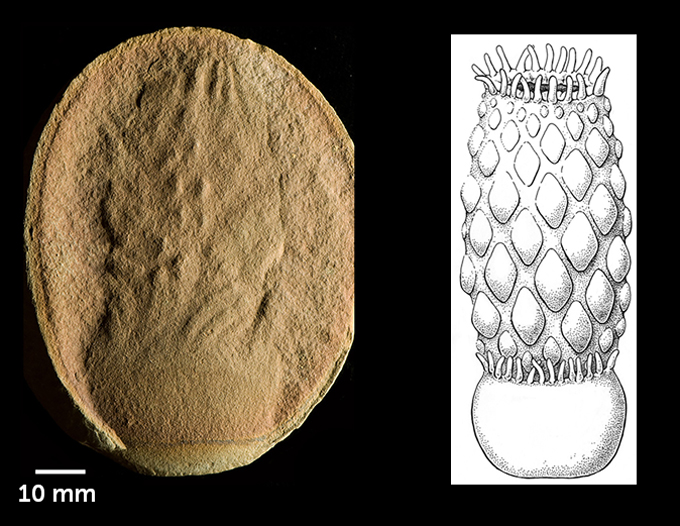This post was originally published on this site
What do you get when you flip a fossilized “jellyfish” upside down? The answer, it turns out, might be an anemone.
Fossil blobs once thought to be ancient jellyfish were actually a type of burrowing sea anemone, scientists propose March 8 in Papers in Palaeontology.
From a certain angle, the fossils’ features include what appears to be a smooth bell shape, perhaps with tentacles hanging beneath — like a jellyfish. And for more than 50 years, that’s what many scientists thought the animals were.
But for paleontologist Roy Plotnick, something about the fossils’ supposed identity seemed fishy. “It’s always kind of bothered me,” says Plotnick, of the University of Illinois Chicago. Previous scientists had interpreted one fossil feature as a curtain that hung around the jellies’ tentacles. But that didn’t make much sense, Plotnick says. “No jellyfish has that,” he says. “How would it swim?”
One day, looking over specimens at the Field Museum in Chicago, something in Plotnick’s mind clicked. What if the bell belonged on the bottom, not the top? He turned to a colleague and said, “I think this is an anemone.”
Rotated 180 degrees, Plotnick realized, the fossils’ shape — which looks kind of like an elongated pineapple with a stumpy crown — resembles some modern anemones. “It was one of those aha moments,” he says. The “jellyfish” bell might be the anemone’s lower body. And the purported tentacles? Perhaps the anemone’s upper section, a tough, textured barrel protruding from the seafloor.
Plotnick and his colleagues examined thousands of the fossilized animals, dubbed Essexella asherae, unearthing more clues. Bands running through the fossils match the shape of some modern anemones’ musculature. And some specimens’ pointy protrusions resemble an anemone’s contracted tentacles.

“It’s totally possible that these are anemones,” says Estefanía Rodríguez, an anemone expert at the American Museum of Natural History in New York City who was not involved with the work. The shape of the fossils, the comparison with modern-day anemones — it all lines up, she says, though it’s not easy to know for sure.
Paleontologist Thomas Clements agrees. Specimens like Essexella “are some of the most notoriously difficult fossils to identify,” he says. “Jellyfish and anemones are like bags of water. There’s hardly any tissue to them,” meaning there’s little left to fossilize.
Still, it’s plausible that the blobs are indeed fossilized anemones, says Clements, of Friedrich-Alexander-Universität Erlangen-Nürnberg in Germany. He was not part of the new study but has spent several field seasons at Mazon Creek, the Illinois site where Essexella lived some 310 million years ago. Back then, the area was near the shoreline, Clements says, with nearby rivers dumping sediment into the environment – just the kind of place ancient burrowing anemones may have once called home.
